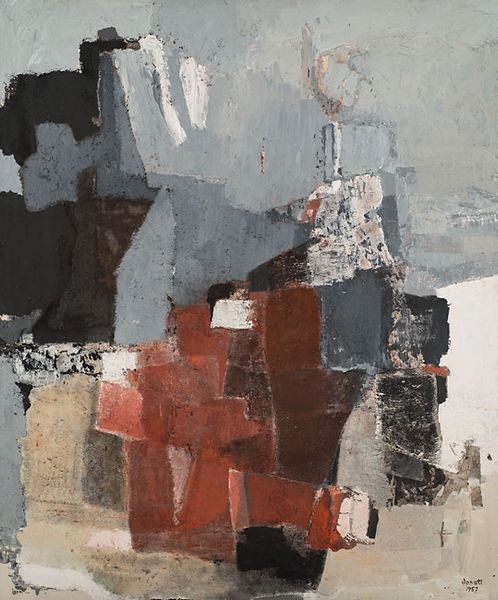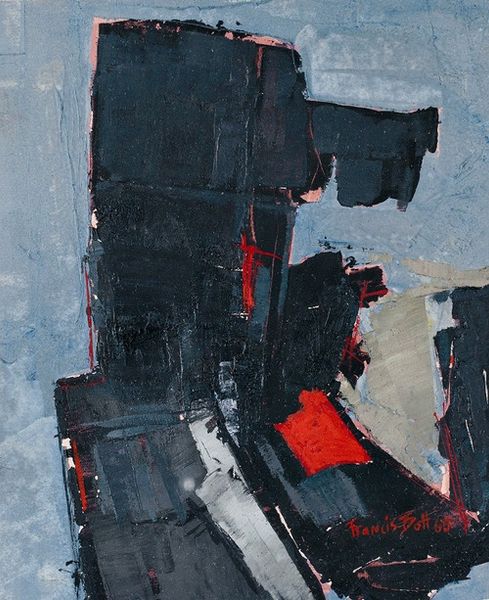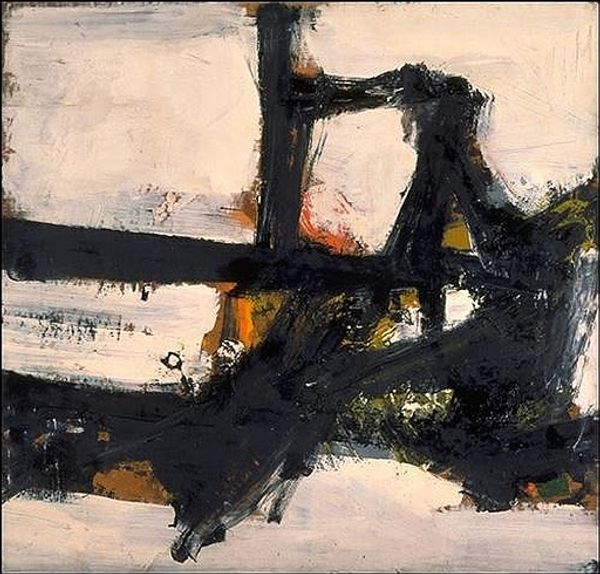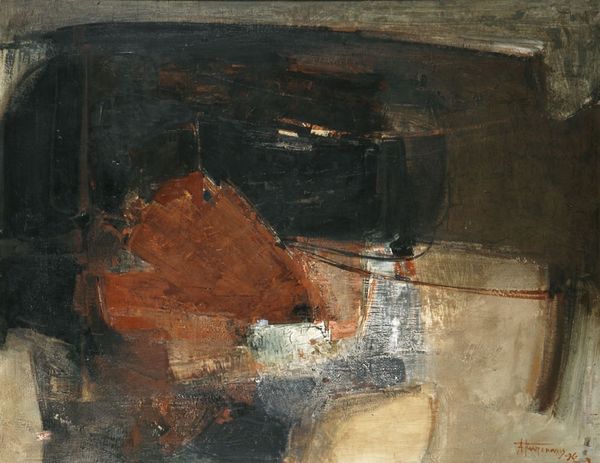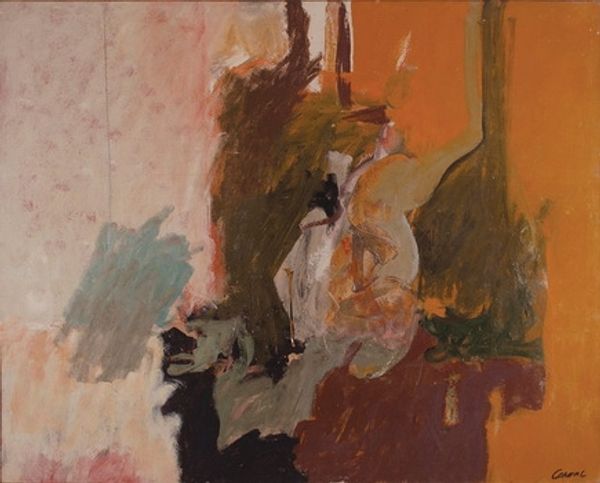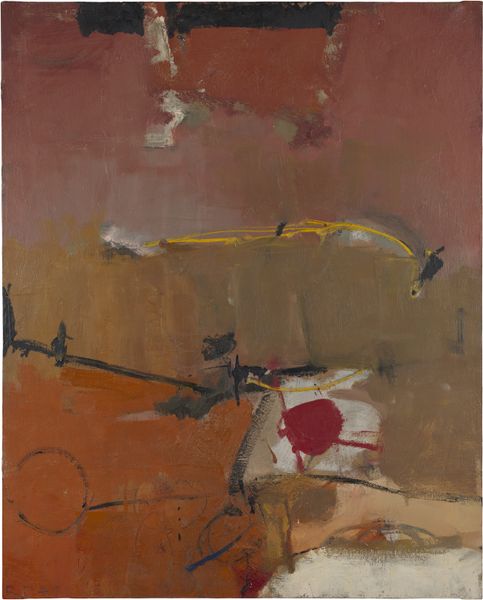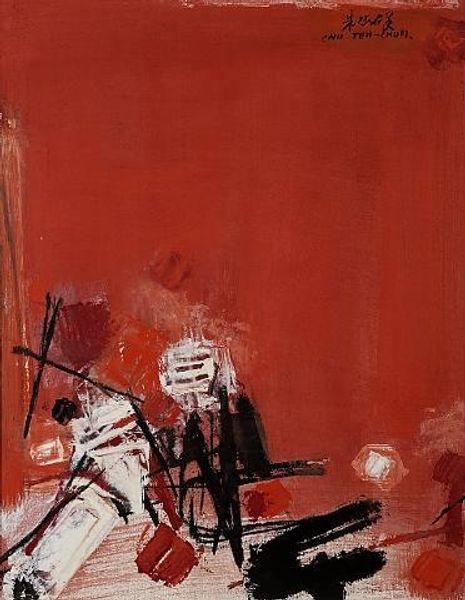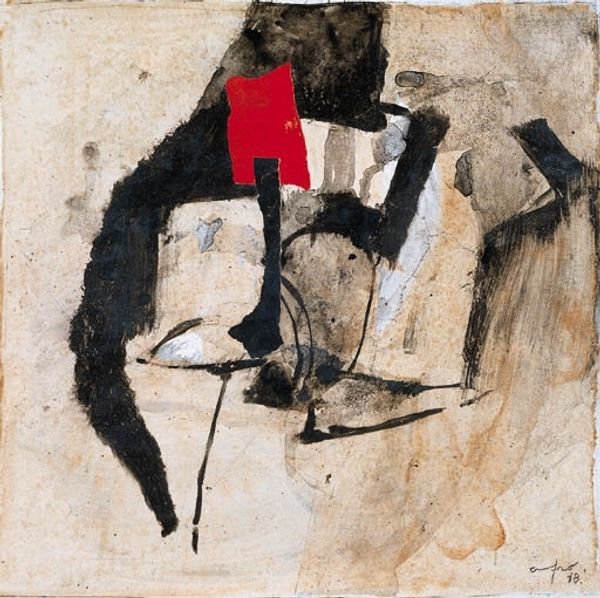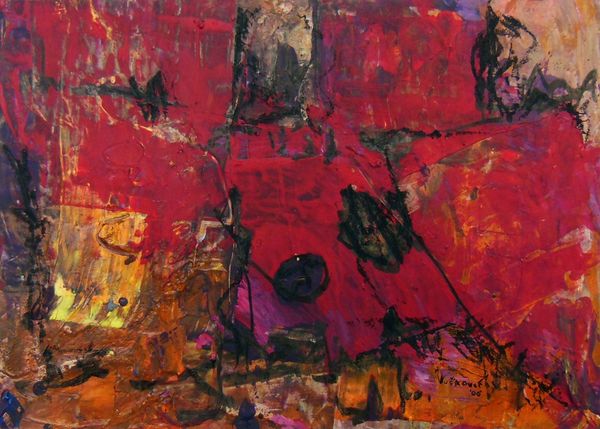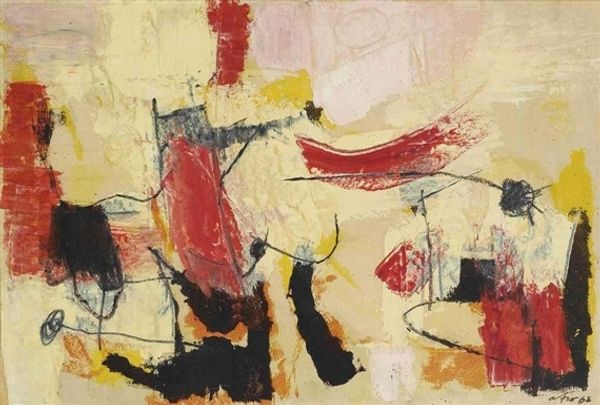
acrylic-paint
#
abstract-expressionism
#
acrylic
#
abstract painting
#
acrylic-paint
#
form
#
oil painting
#
abstraction
#
line
Copyright: Afro,Fair Use
Curator: Afro's "Composition," completed in 1965, presents an intriguing example of post-war abstraction, painted using acrylic. Editor: It strikes me as an almost violent arrangement of form. Those slashes of red disrupt the somber tones, creating a visual tension that's immediately captivating. Curator: Afro, though identified with abstract expressionism, often incorporated a lyricism rooted in his Italian heritage. His engagement with American abstract movements became significant after World War II as Italian artists explored new artistic identities. Editor: I see how the layers build depth and how Afro contrasts opaque and translucent passages. The textural variations almost evoke the rough surfaces of city walls. There is an order here amidst the apparent chaos; it suggests to me an interesting dichotomy. Curator: His involvement with the Gruppo degli Otto highlighted a movement toward internationalism in Italian art and challenged the lingering dominance of pre-war aesthetic values within Italy. Afro helped open new avenues of exploration for the post-war artists. Editor: And how are we to read this relationship between form and meaning here? Given its construction with layering planes of muted color against explosive swaths of crimson? It evokes emotional disruption; a kind of fragmented reflection of internal processes. Curator: The sociopolitical atmosphere of the time – characterized by recovery and redevelopment efforts in Italy - arguably shaped the nature and public role of artworks. The composition may hint at rebuilding following conflict. Editor: It’s remarkable to observe such raw expression delivered through pure abstraction. I initially thought it rather unyielding. But there’s undeniably a complexity within it – something reflective about the push and pull of color, depth, texture. Curator: This piece encapsulates a pivotal moment in art history. The artist helped introduce new forms and ideas for what art could look and be during Italy's social and cultural reconstruction. Editor: Yes, and viewed formalistically, its contrasting components and discordant elements offer not closure but rather infinite possible interpretations through composition.
Comments
No comments
Be the first to comment and join the conversation on the ultimate creative platform.
